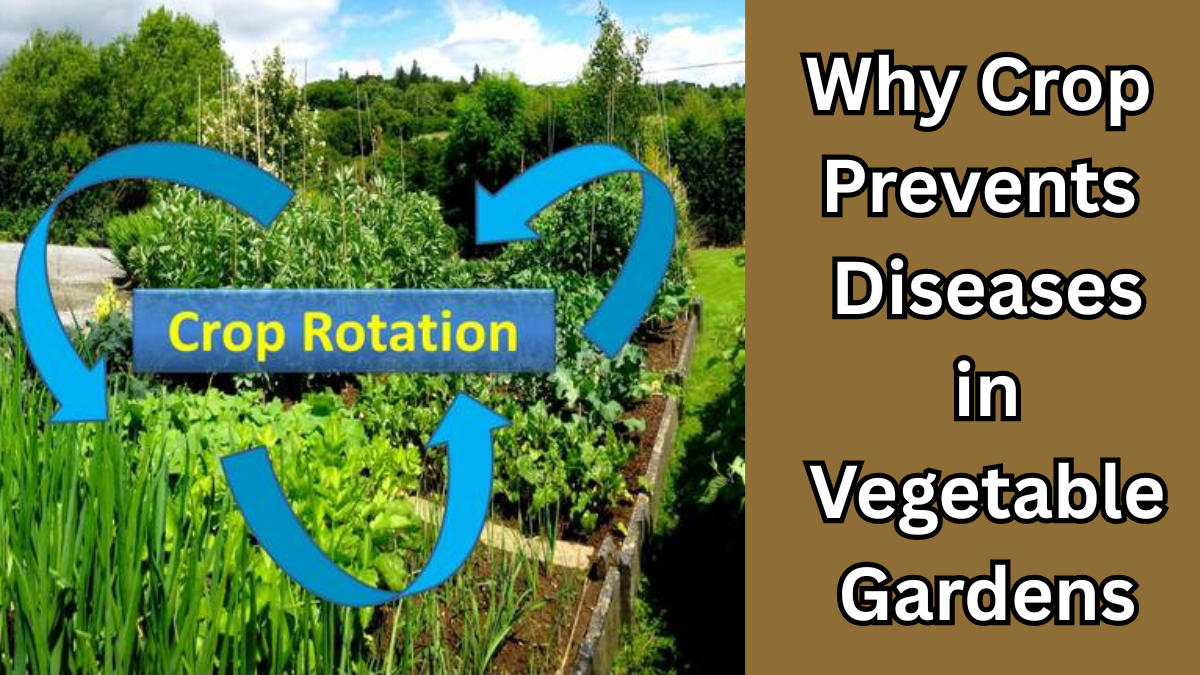Maintaining a healthy vegetable garden is more than just watering and fertilizing. One of the most effective techniques for disease prevention is crop rotation. By understanding how this practice works, gardeners can reduce soil-borne diseases, improve soil fertility, and increase overall crop yields.

What is Crop Rotation?
Crop rotation is the practice of planting different types of crops in the same area across different seasons or years. Instead of growing the same vegetable in the same spot year after year, gardeners switch crops to prevent the buildup of pests and diseases.
-
Helps break the life cycles of pests and pathogens
-
Improves soil structure and fertility
-
Encourages a balanced ecosystem in the garden
How Crop Rotation Prevents Diseases
Growing the same vegetables repeatedly in one plot can lead to the accumulation of pathogens specific to that plant family. Crop rotation interrupts this cycle.
Disease Table
| Disease Type | Affected Plants | Crop Rotation Benefit |
|---|---|---|
| Root rot | Tomatoes, peppers | Rotate with legumes or leafy greens to prevent pathogen buildup |
| Fusarium wilt | Cucumbers, melons | Plant brassicas next season to reduce fungal presence |
| Nematodes | Carrots, onions | Alternate with cereals or legumes to starve soil nematodes |
| Blight | Potatoes, tomatoes | Rotate with legumes or leafy vegetables to break the cycle |
By rotating crops, gardeners minimize the chances of diseases returning, keeping their vegetable garden healthy and productive.
Choosing the Right Rotation Plan
When planning crop rotation, consider grouping plants by their family:
-
Nightshades: Tomatoes, potatoes, peppers, eggplants
-
Legumes: Beans, peas, lentils
-
Brassicas: Cabbage, broccoli, cauliflower
-
Root vegetables: Carrots, onions, beets
Rotate crops so that each plant family occupies a different plot each season. A 3-4 year rotation schedule is often ideal for disease prevention.
Additional Benefits of Crop Rotation
-
Improves Soil Fertility: Different plants use different nutrients, reducing depletion.
-
Reduces Pest Pressure: Many pests are host-specific, so rotating crops starves them out.
-
Encourages Biodiversity: Diverse plants attract beneficial insects and microorganisms.
-
Reduces Chemical Dependence: Fewer diseases mean less need for chemical interventions.
Tips for Successful Crop Rotation
-
Keep a garden journal to track what was planted where
-
Avoid planting crops from the same family consecutively
-
Include cover crops to restore soil health during off-season
-
Combine crop rotation with composting and mulch for maximum benefits
FAQs
1. How often should I rotate crops in my vegetable garden?
It’s best to rotate crops yearly or every growing season. A 3-4 year cycle is ideal for preventing soil-borne diseases.
2. Can I rotate crops within a small garden space?
Yes! Even in small gardens, you can rotate by using container planting, raised beds, or switching sections of your garden.
3. Does crop rotation prevent all vegetable garden diseases?
While it significantly reduces disease pressure, it may not prevent airborne diseases. Combine rotation with proper spacing, watering practices, and sanitation.
4. Which crops are best to plant after legumes?
Leafy greens, root vegetables, and nightshades benefit from legumes because legumes enrich the soil with nitrogen, improving fertility for the next crop.
Click here to learn more